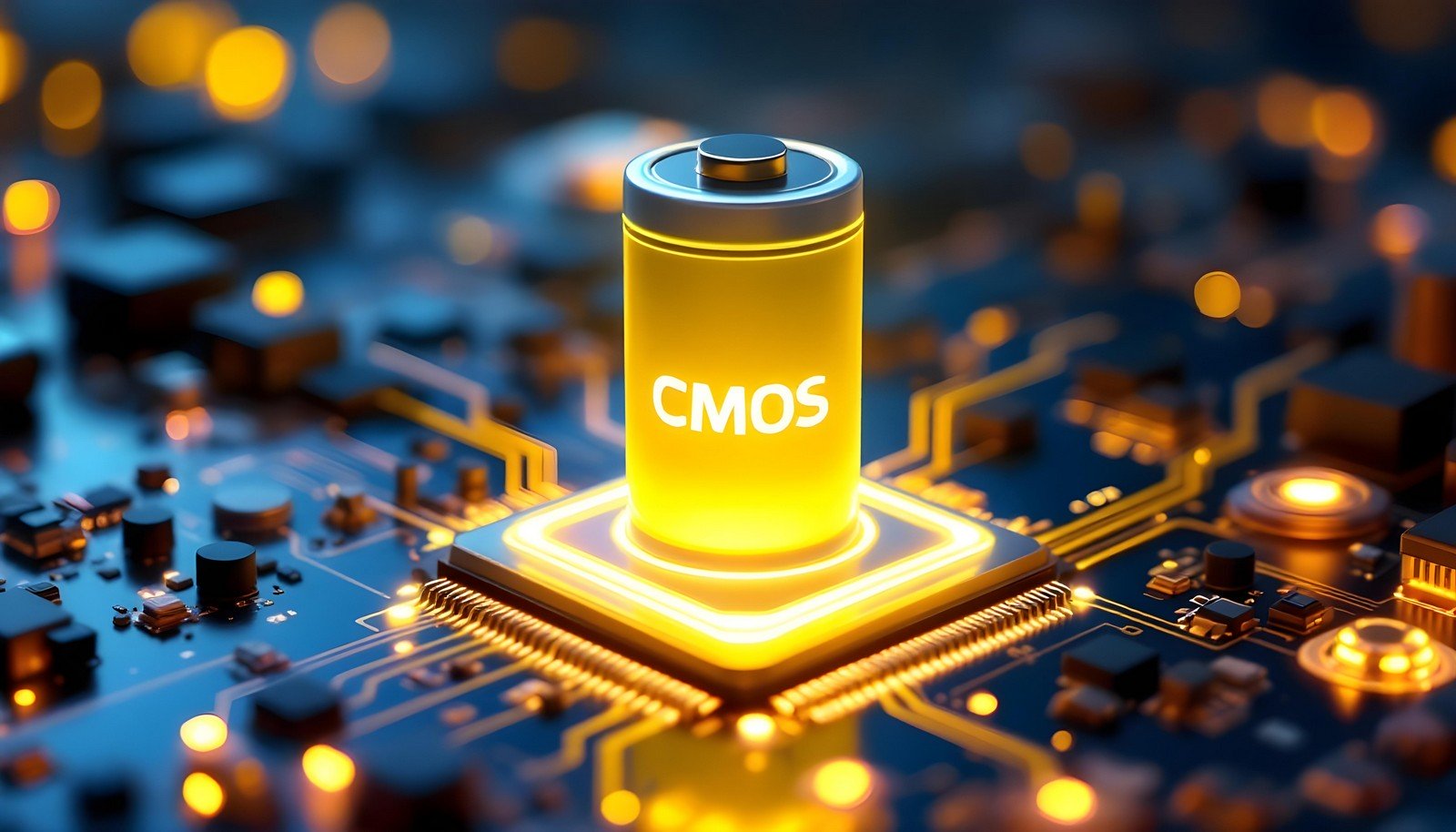CMOS Battery

Quick Navigation:
- CMOS Battery Definition
- CMOS Battery Explained Easy
- CMOS Battery Origin
- CMOS Battery Etymology
- CMOS Battery Usage Trends
- CMOS Battery Usage
- CMOS Battery Examples in Context
- CMOS Battery FAQ
- CMOS Battery Related Words
CMOS Battery Definition
The CMOS (Complementary Metal-Oxide-Semiconductor) battery is a small coin-shaped battery on a computer’s motherboard. Its primary purpose is to power the CMOS chip, which stores essential system information like date, time, and BIOS settings even when the computer is turned off. Without it, the computer would lose these settings every time it shuts down. Most commonly, it uses a lithium cell like the CR2032, designed for longevity and efficiency.
CMOS Battery Explained Easy
Imagine a little battery that helps your computer remember the time and settings, even when you turn it off. It’s like the battery in your clock that keeps it ticking, so it knows what time it is when you check it again. Without this tiny battery, your computer might forget everything!
CMOS Battery Origin
The CMOS battery became an essential component with the advent of motherboards that needed to retain BIOS settings persistently, especially in the 1980s when desktop computing gained popularity.
CMOS Battery Etymology
The term originates from the complementary metal-oxide-semiconductor technology, which refers to the chip powered by this battery. The battery itself borrows its name due to its specific association with this chip.
CMOS Battery Usage Trends
The usage of CMOS batteries has remained consistent for decades. While modern motherboards have adapted to include more flash-based storage for settings, CMOS batteries continue to ensure real-time clock functionality and BIOS fallback for compatibility.
CMOS Battery Usage
- Formal/Technical Tagging:
- Computer Hardware
- Motherboard Components
- Real-Time Clock Maintenance - Typical Collocations:
- "CMOS battery replacement"
- "dead CMOS battery"
- "BIOS settings lost"
- "CR2032 battery for CMOS"
CMOS Battery Examples in Context
- If your computer’s clock resets every time you restart, the CMOS battery might be dead.
- Gamers often check their CMOS battery health to ensure uninterrupted boot-up performance.
- A new motherboard comes with a pre-installed CMOS battery for immediate use.
CMOS Battery FAQ
- What does a CMOS battery do?
It powers the CMOS chip to retain BIOS settings and the real-time clock when the computer is off. - What happens when the CMOS battery dies?
Your computer may lose its date/time settings, and boot issues might occur. - How long does a CMOS battery last?
Typically, 5–10 years depending on usage and motherboard design. - Can I replace a CMOS battery?
Yes, it’s usually a simple process of removing the old battery and inserting a new one. - Where is the CMOS battery located?
On the motherboard, often near the BIOS chip or a label marking its placement. - Is the CMOS battery rechargeable?
No, it’s a non-rechargeable lithium battery. - How do I know if my CMOS battery needs replacement?
Signs include incorrect date/time or BIOS reset messages during startup. - Are all CMOS batteries the same?
Most use the CR2032 lithium cell, but checking your motherboard manual is recommended. - What tools do I need to replace a CMOS battery?
Usually, a small screwdriver to access the motherboard. - Does a laptop have a CMOS battery?
Yes, laptops also have a CMOS battery, often embedded and harder to replace.
CMOS Battery Related Words
- Categories/Topics:
- Motherboards
- Hardware Maintenance
- BIOS Configuration
Did you know?
The CMOS battery not only stores system settings but also keeps the real-time clock (RTC) running even if the computer is unplugged. Fun fact: Space missions often used CMOS-powered chips for their reliability and low power consumption.
PicDictionary.com is an online dictionary in pictures. If you have questions or suggestions, please reach out to us on WhatsApp or Twitter.Authors | Arjun Vishnu | @ArjunAndVishnu

I am Vishnu. I like AI, Linux, Single Board Computers, and Cloud Computing. I create the web & video content, and I also write for popular websites.
My younger brother, Arjun handles image & video editing. Together, we run a YouTube Channel that's focused on reviewing gadgets and explaining technology.



Comments powered by CComment